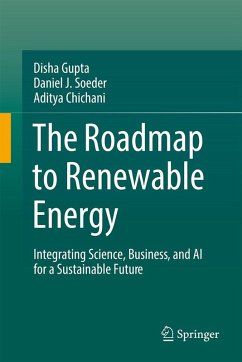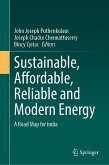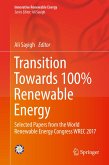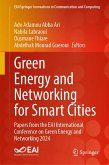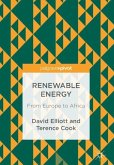This book provides a clear roadmap for adopting renewable energy solutions. It is not a mere technical guide, but a wealth of thoughtful reflection on the mindsets needed to support transition to green energy. This is because a green revolution requires more than technological advances; it demands a cultural shift toward responsibility and environmental stewardship. It calls for ordinary people, businesses, and policymakers to rethink how energy is produced, distributed and consumed.
The book highlights the current urgency, illustrating how global events such as intensifying wildfires, droughts, and extreme weather patterns are no longer distant warnings but part of daily realities. Solar power emerges as a prominent solution in the book, not only for its technical feasibility but also because it represents a fresh approach to energy: decentralized, sustainable, and can be focused on empowering remote communities. In regions struggling with limited access to traditional energy systems, renewables provide a lifeline, reducing dependency on fossil fuels and offering long-term economic and environmental benefits.
One of the core strengths of this book lies in its balance between practical advice and inspiring examples. The author highlights efforts already underway worldwide, but innovatively introduces a modeling of green energy systems in countries like the Democratic Republic of the Congo, showcasing the power of local solutions with global relevance, and illustrating that environmental responsibility is not restricted to wealthier nations; meaningful change can originate from anywhere, driven by communities committed to sustainable practices. The closed-loop simulation for a green energy revolution in the Democratic Republic of the Congo illustrates what any nation on Earth can do to transition to 100% renewable energy while converting existing fossil fuel infrastructures into clean energy drivers.
Throughout the book, the author emphasizes the importance of resilience. In fact, the road to a sustainable energy future is not without challenges, but solutions become achievable when communities, businesses, and governments align their efforts. Resilience, in this context, is the ability to anticipate difficulties, adapt swiftly, and implement innovative solutions to ensure long-term sustainability.
The book highlights the current urgency, illustrating how global events such as intensifying wildfires, droughts, and extreme weather patterns are no longer distant warnings but part of daily realities. Solar power emerges as a prominent solution in the book, not only for its technical feasibility but also because it represents a fresh approach to energy: decentralized, sustainable, and can be focused on empowering remote communities. In regions struggling with limited access to traditional energy systems, renewables provide a lifeline, reducing dependency on fossil fuels and offering long-term economic and environmental benefits.
One of the core strengths of this book lies in its balance between practical advice and inspiring examples. The author highlights efforts already underway worldwide, but innovatively introduces a modeling of green energy systems in countries like the Democratic Republic of the Congo, showcasing the power of local solutions with global relevance, and illustrating that environmental responsibility is not restricted to wealthier nations; meaningful change can originate from anywhere, driven by communities committed to sustainable practices. The closed-loop simulation for a green energy revolution in the Democratic Republic of the Congo illustrates what any nation on Earth can do to transition to 100% renewable energy while converting existing fossil fuel infrastructures into clean energy drivers.
Throughout the book, the author emphasizes the importance of resilience. In fact, the road to a sustainable energy future is not without challenges, but solutions become achievable when communities, businesses, and governments align their efforts. Resilience, in this context, is the ability to anticipate difficulties, adapt swiftly, and implement innovative solutions to ensure long-term sustainability.


